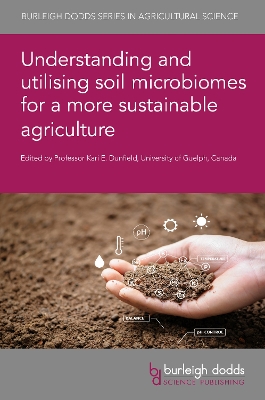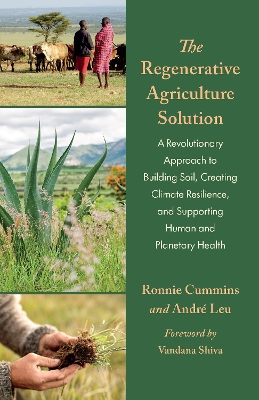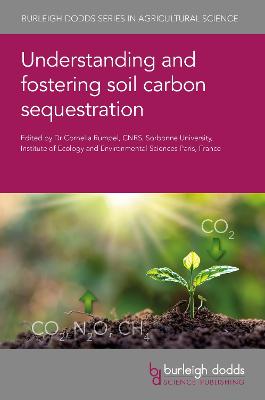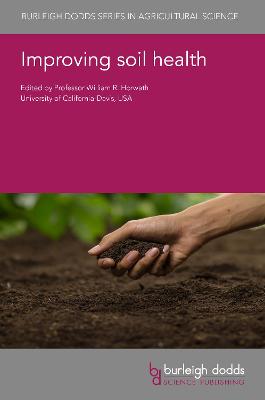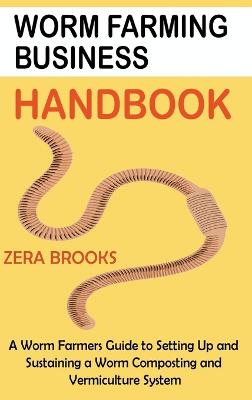Principles of Agronomy for Sustainable Agriculture
 portes grátis
portes grátis
Principles of Agronomy for Sustainable Agriculture
Fereres, Elias; Villalobos, Francisco J.
Springer International Publishing AG
11/2024
679
Dura
9783031691492
Pré-lançamento - envio 15 a 20 dias após a sua edição
Descrição não disponível.
Chapter 1: Agriculture and agricultural systems.- Part I: The crop environment.- Chapter 2: The soil Physical, chemical and biological properties.- Chapter 3: The radiation balance.- Chapter 4: Wind and turbulent transport.- Chapter 5: Air temperature and humidity.- Chapter 6: Soil temperature and soil heat flux.- Chapter 7: The energy balance.- Chapter 8: The water budget.- Chapter 9: The components of evapotranspiration.- Chapter 10: Calculation of evapotranspiration and crop water requirements.- Part II: Crop productivity.- Chapter 11: Crop development and growth.- Chapter 12: Plant density and competition.- Chapter 13: Radiation interception, radiation use efficiency and crop productivity.- Chapter 14: Effects of water stress on crop production.- Chapter 15: Limitations to crop productivity.- Part III: Crop management.- Chapter 16: Sowing and planting.- Chapter 17: Tillage.- Chapter 18: Soil conservation.- Chapter 19: Irrigation systems.- Chapter 20: Irrigation scheduling using the water balance.- Chapter 21: Irrigation scheduling using plant- and soil-based methods.- Chapter 22: Deficit irrigation.- Chapter 23: Optimizing irrigation.- Chapter 24: Control of salinity.- Chapter 25: Fertilizers.- Chapter 26: Nitrogen fertilization I: The nitrogen balance.- Chapter 27: Nitrogen fertilization II: Fertilizer requirements.- Chapter 28: Fertilization with phosphorus, potassium and other nutrients.- Chapter 29: Fertigation.- Chapter 30: Soil improvement and reclamation.- Chapter 31: Manipulating the crop environment.- Chapter 32: Frost protection.- Chapter 33: Control of weeds and other biotic factors.- Chapter 34: Application of herbicides and other biotic control agents.- Chapter 35: Harvest and conservation.- Chapter 36: Cropping and farming systems.- Chapter 37: Energy consumption in agriculture.- Chapter 38: Remote sensing.- Chapter 39: Site-Specific Agriculture.- Chapter 40: Crop models.- Chapter 41: Climate change adaptation and mitigation.- Chapter 42: Agronomy and the sustainability of crop production.- Chapter 43: Quantitative analysis of crop production in an irrigated farm (Part I).- Chapter 44: Quantitative analysis of crop production in an irrigated farm (Part II).
Este título pertence ao(s) assunto(s) indicados(s). Para ver outros títulos clique no assunto desejado.
Sustainable Agriculture;Crop Management;Irrigation schedules;Fertilizer schedules;Soil conservation;water conservation;humidity;water balance
Chapter 1: Agriculture and agricultural systems.- Part I: The crop environment.- Chapter 2: The soil Physical, chemical and biological properties.- Chapter 3: The radiation balance.- Chapter 4: Wind and turbulent transport.- Chapter 5: Air temperature and humidity.- Chapter 6: Soil temperature and soil heat flux.- Chapter 7: The energy balance.- Chapter 8: The water budget.- Chapter 9: The components of evapotranspiration.- Chapter 10: Calculation of evapotranspiration and crop water requirements.- Part II: Crop productivity.- Chapter 11: Crop development and growth.- Chapter 12: Plant density and competition.- Chapter 13: Radiation interception, radiation use efficiency and crop productivity.- Chapter 14: Effects of water stress on crop production.- Chapter 15: Limitations to crop productivity.- Part III: Crop management.- Chapter 16: Sowing and planting.- Chapter 17: Tillage.- Chapter 18: Soil conservation.- Chapter 19: Irrigation systems.- Chapter 20: Irrigation scheduling using the water balance.- Chapter 21: Irrigation scheduling using plant- and soil-based methods.- Chapter 22: Deficit irrigation.- Chapter 23: Optimizing irrigation.- Chapter 24: Control of salinity.- Chapter 25: Fertilizers.- Chapter 26: Nitrogen fertilization I: The nitrogen balance.- Chapter 27: Nitrogen fertilization II: Fertilizer requirements.- Chapter 28: Fertilization with phosphorus, potassium and other nutrients.- Chapter 29: Fertigation.- Chapter 30: Soil improvement and reclamation.- Chapter 31: Manipulating the crop environment.- Chapter 32: Frost protection.- Chapter 33: Control of weeds and other biotic factors.- Chapter 34: Application of herbicides and other biotic control agents.- Chapter 35: Harvest and conservation.- Chapter 36: Cropping and farming systems.- Chapter 37: Energy consumption in agriculture.- Chapter 38: Remote sensing.- Chapter 39: Site-Specific Agriculture.- Chapter 40: Crop models.- Chapter 41: Climate change adaptation and mitigation.- Chapter 42: Agronomy and the sustainability of crop production.- Chapter 43: Quantitative analysis of crop production in an irrigated farm (Part I).- Chapter 44: Quantitative analysis of crop production in an irrigated farm (Part II).
Este título pertence ao(s) assunto(s) indicados(s). Para ver outros títulos clique no assunto desejado.

